Mclaren P1 Vs Senna
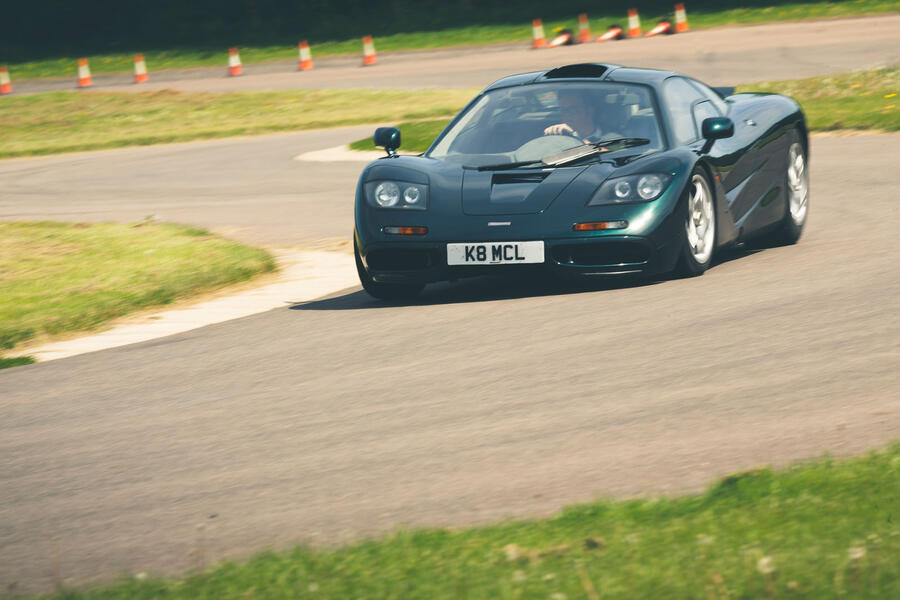
The V12 is smooth, the gearbox on this 58,000-mile car loose and easy to operate. So because there is time, you can tootle about for a bit. My goodness, it rides well. No anti-roll bars here or 'anti-traction devices' as they used to be called at McLaren. The unassisted steering communicates like that of a Lotus and no wonder: there are Exiges you can buy that weigh more than this.
And then you can resist no longer so, pausing only to remind yourself that this is 627bhp in 1164kg of car and that it has no safety systems of any kind at all, you give it the boot. Which is when part of you that somehow and stupidly filed this car under 'nice old thing' loses all comprehension of what happens next; and it will only be regained when you remember the old dear has a better power-to-weight ratio than a Bugatti Veyron. Really. In the cockpit, all your limbs are busy changing gear after gear and holding it straight. By the time you feel you can afford to glance down, an insane number is already on the speedometer, like 150mph.
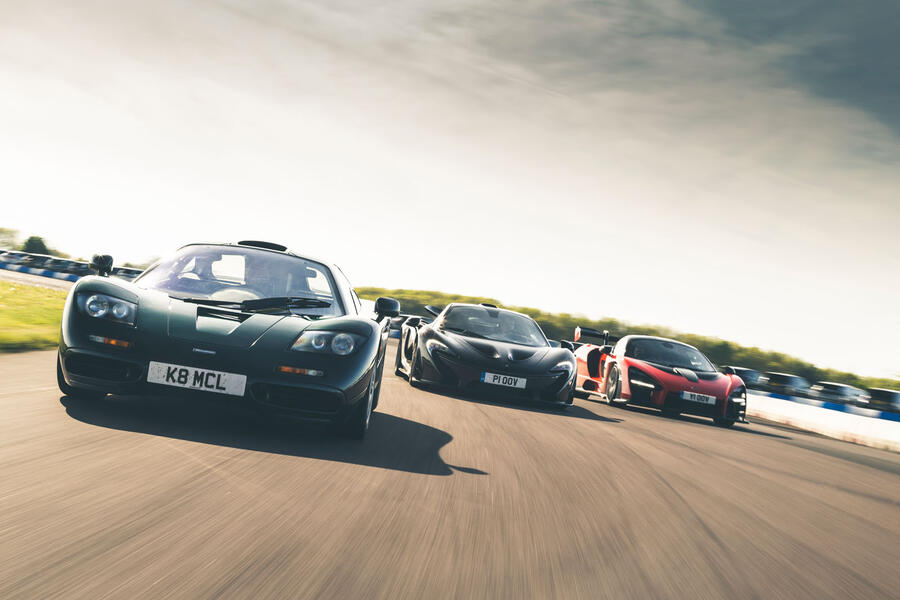
Then something else happens or, more accurately, doesn't happen: the rate of acceleration scarcely slows, because compared with modern cars whose bodies generate downforce, the F1 has no drag. Out of deference to its age and value, I don't press on much further, but this very car once did over 240mph, which is way faster than either of its younger, far more powerful descendants could manage.
But while the F1 feels utterly mighty in a straight line, around the rest of the lap, the years start to show. This is by no means all bad news because on new Michelins (the only components on the car not to period spec as the original Goodyears are no longer available), the car has surprisingly good grip and a nice balance near the limit. But I don't want to throw it around and that has nothing to do with its value: F1s tend not to react brilliantly when pushed further than they care to go and I'm very happy to leave that aspect of its character unexplored. But there's no avoiding the brakes: and by both modern standards and those of any car with this level of performance they are, frankly, terrible.
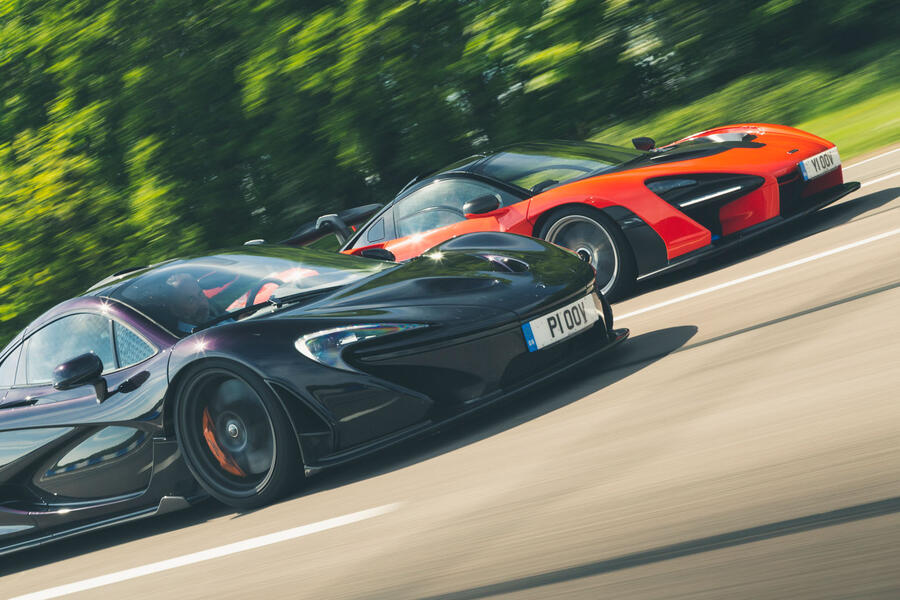
What will the P1 feel like after that? There's so much about it that seems less, well, good. It has a small turbo V8, not an enormous atmospheric V12. You shift gears via paddles, not a lever. You can get only two people on board and there's not much room for luggage. And, yes, it's far more powerful thanks to its hybridassisted 903bhp engine but so, too, does that very system make it heavier – 300-odd kilograms heavier. When it originally appeared alongside the LaFerrari and Porsche 918, hybrids were a novelty, so much so in cars like this that a new term was coined that was never applied to the F1 in period: these were 'hypercars'. But is it really such a leap?
Well, and in a word, yes. For the avoidance of doubt, I'd have the F1 powertrain over the P1 equivalent every day of the week, month and year but that doesn't make the P1 less than one hell of a car, and capable in ways the F1 simply cannot be.
But let's look first at what they share, beyond a badge, all-carbon construction and very funky doors. And the curious thing is that despite the 20 years that separate them and the fact that very few of the people who worked on the F1 were still around in Woking to work on the P1, they still feel related. And it's that sense of light and space in the cabin that does it. This is a massively more complex car, bristling with driving modes for the powertrain and chassis, push-to-pass power boost and DRS buttons, but it still manages to make you feel at home.
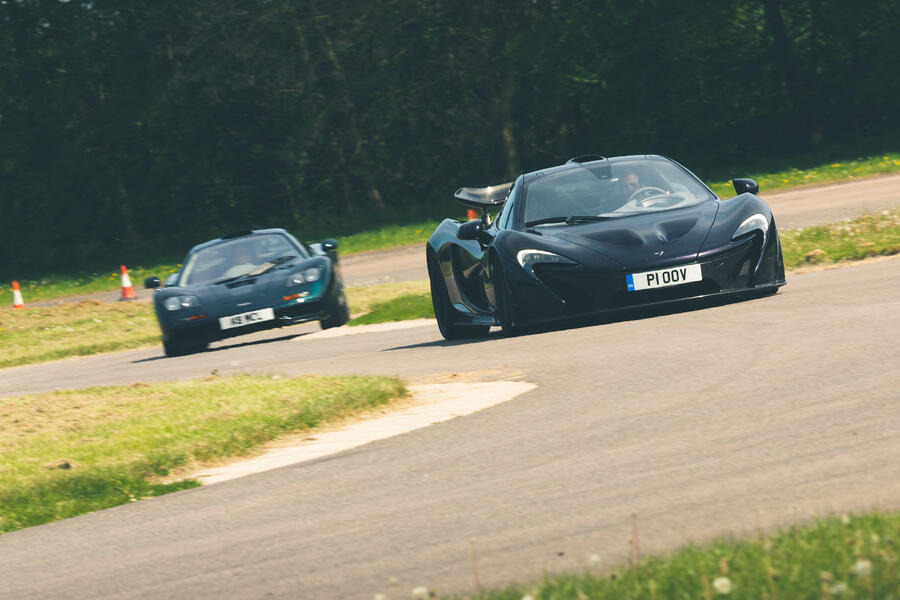
The difference is that here the chassis is no longer cast in a supporting role to the engine. They get equal billing and provide a double act of what, even today, is rare ability. The P1 actually feels quicker in a straight line than the F1 because the hybrid system fills in all the holes in the torque delivery, providing turbocharged shove with zero lag. It doesn't sound beautiful like the F1 – in fact, it sounds quite ugly – but it somehow fits the maniacal rate at which it gathers speed.
But while you're conservative with the F1's entry speed into corners and downright cautious with its brakes, you can treat the P1 almost like a racing car. You can brake from 190mph, feel the carbon brakes shed 100mph like they're shrugging off a coat and then fling it into a corner while still hard on the stoppers. Try that in the F1 and you'd be in the trees. It has massively more grip yet, despite that, the limit is not something to be carefully skirted as you would in the F1: it's a place to seek out and enjoy. With proper downforce, active aero, (relatively) modern tyres and one of the world's most sophisticated suspension systems, the P1 is actually a far easier and more accessible car to drive fast than the F1, and that fact stands as a powerful riposte to the many and varied ways in which the older car proves that not all progress is always in the right direction.
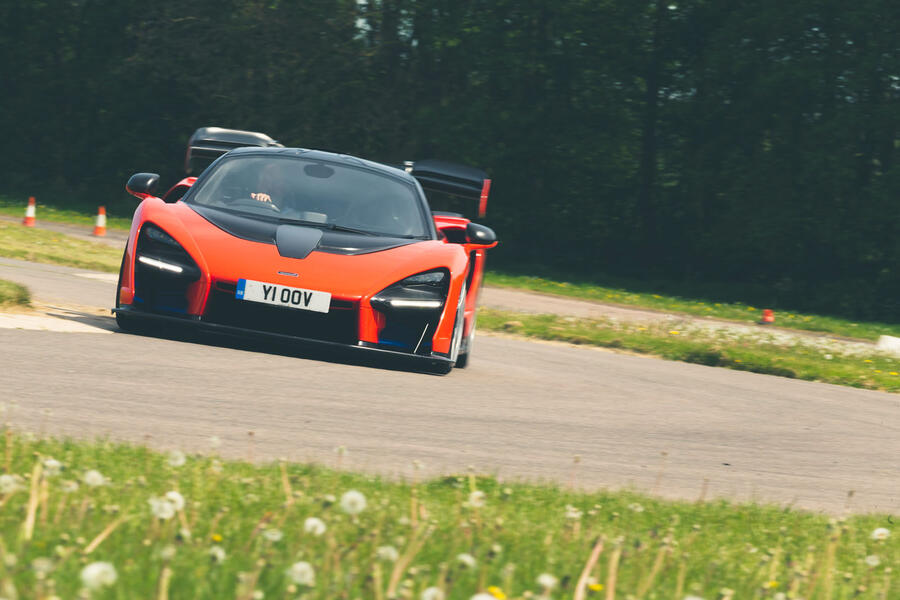
But it is the Senna that shows how McLaren hypercar philosophy has evolved over a quarter of a century. The F1 was a pure road car and always intended as such. The P1 is a finely judged balance between road and track and uses its suspension to prove itself very plausible in both environments. But the Senna? I once spent a long day on the road in one and it was thrilling. So, too, was it hard. Really hard. The car is noisy and it is uncomfortable. You never know what reaction you're going to get when you nail the throttle because you'll almost always instantly trigger a traction control system so sophisticated that all you usually notice is a reduction in engine power. You can, of course, turn it off but get ready to get busy if you do. More than anything, the Senna feels like a caged beast on the road because, unlike the others here, unless you're driving it as fast as you can, there's not much point being on board. And you can't do that in public.
But on the track? Oh my goodness. The Senna is so good it actually makes the P1 feel if not actually clumsy then certainly its age. It feels like a racing car, or as much like a racing car as a street-legal tyre will permit in 2019. Its composure in quick corners is utterly unlike that of any other road car I've driven. Its precision, speed and feel at big speeds is simply sublime. If it has a problem, it is only that the car is so much better than its Pirelli Trofeo R tyres, which are themselves state of the art. In high-speed corners, when there's 800kg of downforce nailing the car to the road, it's mesmerising, in a different world even from that inhabited by the P1. In the slow stuff, when it can only rely on mechanical grip, there is understeer that needs a degree of management. Happily, being closer in weight to the F1 than the P1 and more chuckable than either, there's much fun to be had sorting it out. And it is utterly viceless, too.
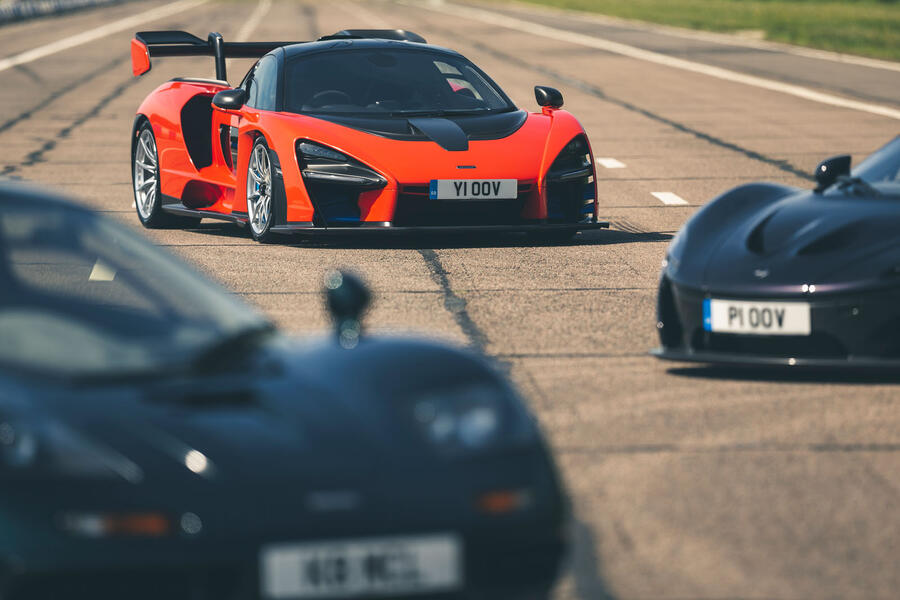
I don't much like 'horses for courses' verdicts, but it seems iniquitous to come up with a one, two, three order for these cars, separated as they are not just in time, but concept, too. While the F1 is entirely established as perhaps the automotive icon of the last generation, neither the Senna nor even the P1 have yet had time to find their place in history, but the progression from road car to track car is clear. How interesting, then, that the next car in McLaren's Ultimate Series is the Speedtail, a car billed as more luxurious and road oriented even than the F1. So it seems the circle will be complete.
Is history about to repeat itself?
No one ever called the F1 a hypercar – at least to my recollection – largely because this exceptionally ugly word was not in remotely common parlance, even if it existed at all. But, in retrospect, was it the first? Probably, although I'd listen to the case for the Jaguar XJ220, which itself produced a quantum leap forward in road car performance only a year before the F1.
It took an age – nearly 20 years, in fact – for the standard of street car performance to return to F1 levels, with the likes of the P1, LaFerrari and Porsche 918. But now it seems as though it's going to leap again. Twenty-five years after the F1, the Aston Martin Valkyrie and MercedesBenz Project One may take a similarly long leap forward, however hard that is to imagine. Nor should we forget the T50 of F1 creator Gordon Murray.
Source: https://www.autocar.co.uk/car-news/features/flat-out-mclarens-ultimate-trio-f1-vs-p1-vs-senna


0 Komentar